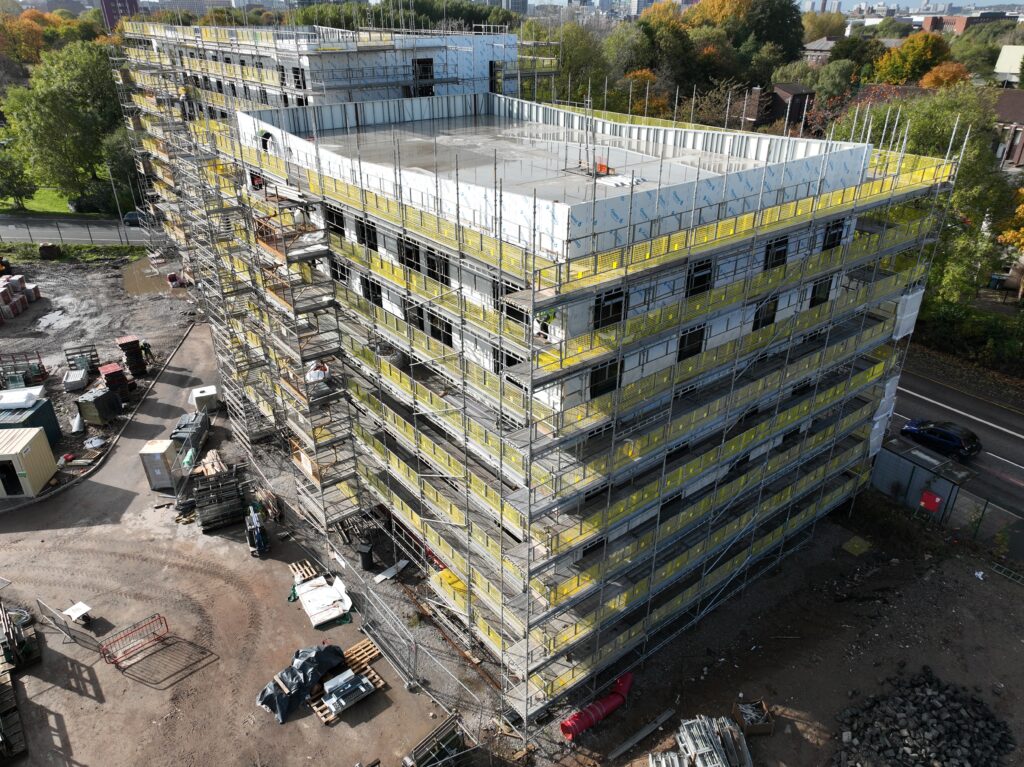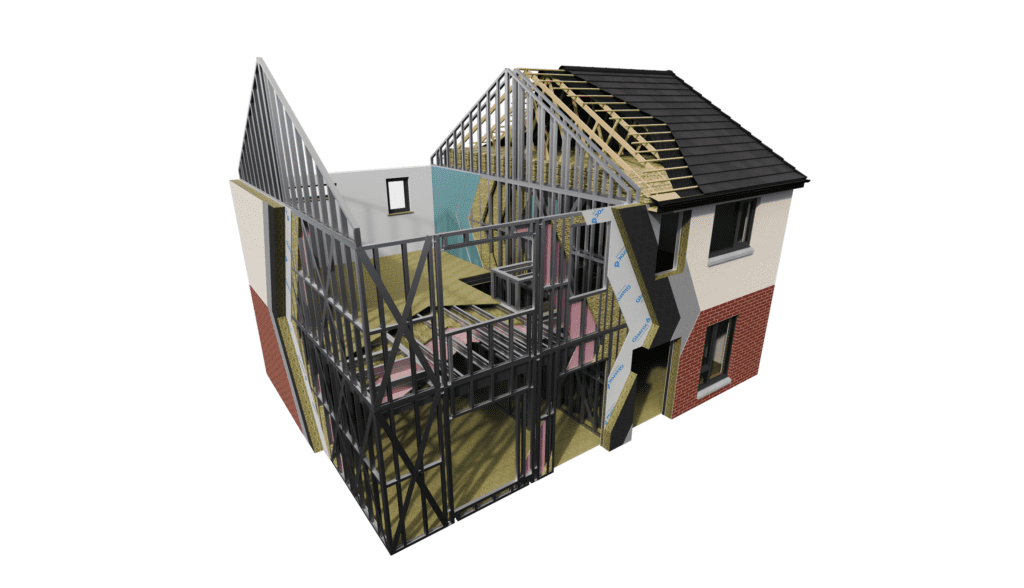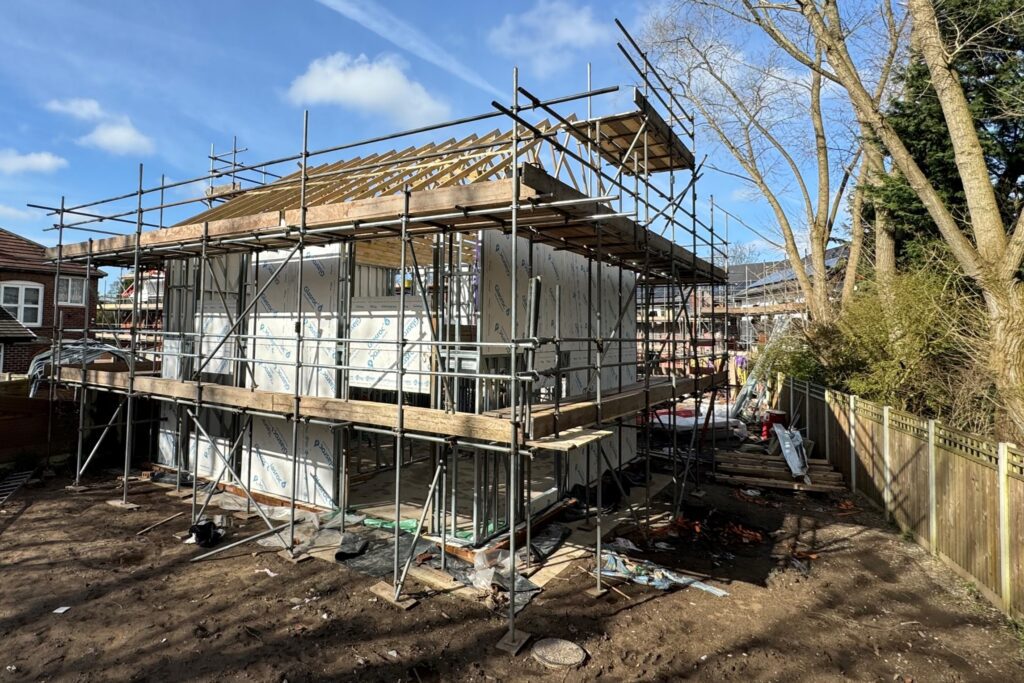Below is an abridged version of an article that appeared on the Light Steel Frame Association’s website reporting on the discussions that took place at the industry roundtable. The original LSFA article can be found here.
Claimed to be the biggest change in over 40 years, the new Building Safety Act came into force with little fanfare – creating barely a ripple across the construction landscape. Specially invited by the LSFA, a group of legal professionals, construction consultants and light steel framing experts gathered in Birmingham for a lively discussion around the implications of the Act and the challenges of implementing it, Intrastack’s Head of Technical & Sales Support, Matt Grant, was one of those professionals in attendance.
Building a Safer Future
Coming in the wake of the Hackitt Review ‘Building a Safer Future’ and receiving Royal Assent on 28 April 2022, the Building Safety Act covers a raft of changes introducing new duties for the management of fire and safety in high-rise residential buildings. These include a new system of accountability for safety in projects and a refreshed regulatory framework. The Act also has wider implications across all construction sectors.
The Building Safety Regulator (BSR), based within the Health and Safety Executive, became operational from 01 April 2023 and the principal accountable person (legally responsible for the structure and exterior of the building) has been required to register high-rise residential buildings from that date.
The overhaul of regulations will require building owners to demonstrate safety at each of three new ‘gateways’ – planning and design, construction, and occupation. Compliance will be monitored by the Building Safety Regulator with significant powers to demand documents and to stop works, and a new National Regulator for Construction Products with the power to remove dangerous products.
On 01 October 2023, the secondary legislation needed to support the practical implementation of the Building Safety Act came into force to help ensure responsible parties operate within the law. The Building Safety Regulator will now monitor the construction industry and will be able to impose fines, order alterations or the removal of non-compliant work. The extensive enforcement powers granted by the Building Safety Act means the Buildings Safety Regulator has the power to prosecute individuals of corporate bodies.
Imperative for Change
Roundtable facilitator, Darren Richards explained how the LSFA is helping members to understand that the Building Safety Act will change the construction landscape significantly. Through issuing initial guidance and further information highlighting the implications of the secondary legislation, the LSFA is helping members to understand their obligations.
Kicking off proceedings, Darren asked: “Is the industry prepared for the new era?” The legal experts were the first to step forward with Victoria Ball, Partner at Trowers & Hamlins and Birmingham lead of the project and construction team, responding: “We are just starting to see an increase in requests for contractual advice but there is a lot of uncertainty around how it will play out for contractors getting through the gateways to achieve a legally occupied building.”
Andrew Way, Associate Director at the Steel Construction Institute (SCI) expressed concern: “The lack of technical engineering enquiries the SCI is receiving is certainly not at the levels we were expecting. The light steel frame manufacturing sector is well advanced, with checks and balances in place. I firmly believe the certainty surrounding offsite construction, will meet the demands of regulatory requirements and offer greater opportunities for the industry.”
Collaborative Action
Roundtable debates can expose a divergence of opinions but throughout the two-hour discussion, there was consensus around the table. Universally the light steel frame manufacturers, engineers, and technology leads, welcomed the legislation.
Darren Richards then asked: “What can the LSFA and its members do to support construction clients in meeting the requirements of the Building Safety Act?”
“There is a particular focus on record keeping, meeting the requirements of a ‘golden thread’ of information, documenting every construction project,” responded Matthew Grant, Head of Technical Development at Intrastack, part of Saint-Gobain. “This is a particular strength of Intrastack and the digital savvy light steel frame sector. We are well prepared.”

“This is seen as a positive step forward which will mark a differentiation between manufacturers with and without test data,” added Ben Towe, Group Managing Director at Hadley Group. “This legislation will reinforce the importance of being able to independently verify a systems’ performance in relation to building safety.”
It was proposed that the LSFA set up a working group to engage directly with the Building Safety Regulator to set a high bar and ensure that the light steel frame sector is at the forefront of implementation of new technology for traceability, design information management and robust construction details with validated performance.
More Stringent Regime
It was generally agreed that having the Building Safety Regulator sitting within the HSE will offer a certain level of gravitas and was a ‘smart move’ on the part of the government, but doubts were raised about recruitment of the regulatory team, and the levels of resource required to implement and police the new legislation, which could prove challenging.
Drawing conclusions, Darren Richards said: “The government has asked the industry and its trade associations to provide leadership to aid and support compliance with legislative requirements, and to work closely with the regulator. It is apparent that there is a consensus of support and those around the table do not appear to be particularly intimidated by the implications of the new more stringent regime.”
Matthew Grant added: “It is our duty as a sector to collaborate to promote what we are doing to meet regulatory requirements and help educate construction clients and supply chains by raising awareness and imparting expertise.”
It has been unclear until now how the government and Building Safety Regulator will put the legal requirements within the Building Safety Act into effect, however this new legislation is intended to help ensure responsible parties operate within the law.
“The building safety legislation is intended to drive a cultural sea change,” stated Victoria Ball. “This is not going to be a tick box exercise for the industry. Construction professionals will need to embrace significant behavioural changes and the sector will be forced to adopt a different approach.”
In Summary
The new regulations deliver the recommendations laid out in the Hackitt Review and cover the technical detail underpinning the new, more stringent regime for the design and construction of higher-risk buildings, wider changes to the building regulations for all buildings and the details of the new in-occupation safety regime for higher-risk buildings.
Now the secondary legislation is released there is a huge amount of work to be done, primarily in England as these regulations impact this country the most, with a significant amount relating to Wales and very little applying to Scotland or Northern Ireland. We now have confirmation that the transitional period began in October and the industry has less than six months to get everything in place ready for full implementation of the Building Safety Act in April 2024.
Intrastack would like to thank the LSFA for hosting the roundtable and for driving engagement, championing change, and spreading the word about the safety, cost, performance and sustainability benefits of contemporary light steel frame systems.





